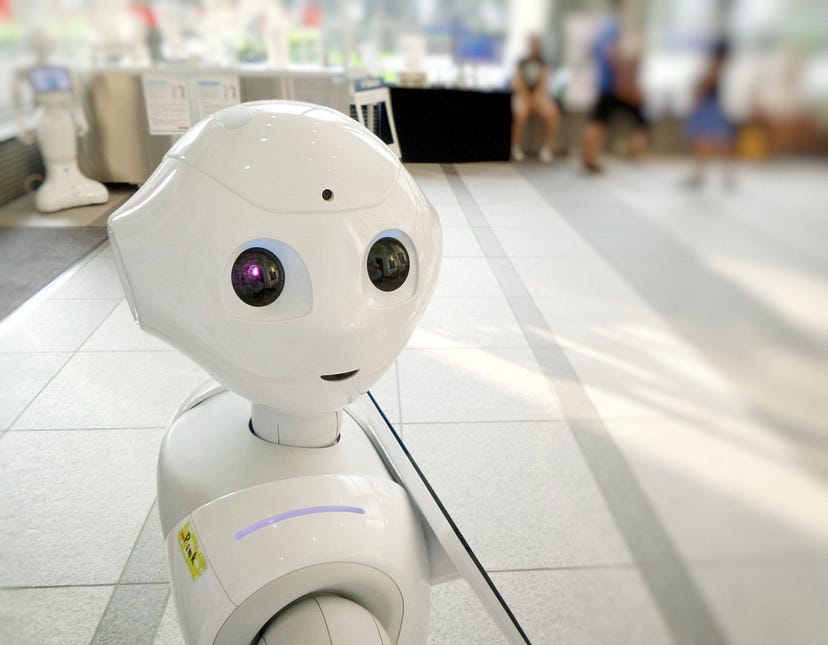Understand the Basics of Machine Learning Systems
With the recent explosion of AI systems into everyday work, everything seems magical. From Generative AI models to out-of-the-world systems, everything about machine learning seems so out of normal. But for people with a newfound interest in this world who want to learn more, it will be nice to understand everything from the ground up and know the foundation of these life-changing technologies.

Simply put, Machine learning is defined as the art or science of getting computers to learn without them being given explicitly a set of instructions to follow.
Tom Mitchell in his 1997 paper laid out a more technical term and gave out the following definition.
A computer is said to learn from experience E with respect to some task T and some performance P if its performance on T as measured by P improves with experience E.
To break this down, let us take an example.
If we want an ML system to serve an AI robot that crosses the road, we can consider the following.
Task T is to cross the road in a street with no street lights from one end to the other.
Experience E from which the computer is learning is the data that is being fed into it when it attempts to cross the road.
On the first try, it might attempt to directly move ahead and cross the road. Then, it is very possible that it will get hit by an oncoming car from the left side.
Hence, the system will rate its performance P with respect to Task T — on crossing the road. Maybe 0.2 — Not good. Hence, it has gotten an experience E which is to look left before crossing. It might repeat the task, and the next might be that it will be hit again because of not look right.
Overtime, this system will learn that to cross the road, you must learn the best policy which is to
- Look Left
- Look Right
- Look Left Again
Then Cross!
Hence, the performance on performing Task T has improved greatly with experience E.
The above task is a classical Machine Learning Type known as Reinforcement Learning. Reinforcement learning systems are greatly employed and played a great part in the Defeat of the Go champion in 2015 when AlphaGo played its first match against the reigning three-time European Champion, Mr. Fan Hui.
From the example above, one might ask, why shouldn’t the robot not have been told beforehand that the first step is looking left and then right then left again? Well, there are different types of systems and various ways these systems are designed.
There are types of Machine Learning Systems Such as:
1. Supervised Learning
2. Semi-Supervised Learning
3. Unsupervised Learning
4. Reinforcement Learning
Supervised Learning Systems
Machine learning systems that are usually given expected inputs and results are called Supervised Learning Systems. Supervised learning systems are trained on what we called the training set. Supervised learning systems fundamentally learn by understanding and building patterns around predefined data and expected outcomes. Just as how you take a test for a class after studying (training) for an exam (deployment), before deploying the models, we should always test the performance of these models using the test set.
The training set we feed to the algorithm contains desired solutions called labels. Labels are what we are trying to achieve. In its most basic form, we know 1 + 1 = 2, 1 + 2 = 3, 1 + 3 = 4
Results 2, 3, and 4 are called the labels because these are the results we are trying to achieve. A set of features that can be used to predict a value are known as a predictor. For example, predictors for life expectancy can be gender, genetics, access to health care, hygiene, diet and nutrition, exercise, lifestyle, and crime rates. Supervised learning algorithms can be used to do tasks such as image and object recognition, spam detection, and many more. To predict a numeric value, these are usually called regression tasks.
Common types of Supervised Learning Algorithms include
- Linear Regression
- Logistic Regression
- K nearest Neighbors
- Support Vector Machines (SVMs)
- Decision Trees and Random Forests
- Neural Networks ( These are fluid as some can also be unsupervised)
Unsupervised Learning Systems
The main difference between a supervised and unsupervised learning system is the labeling of data. In an unsupervised Learning system, the system learns without a teacher. There are no labels and the system tries to make sense of what it already has. Here, the system uses algorithms to analyze and cluster unlabelled datasets. The algorithm finds hidden patterns on its own. An example is Amazon using association learning to tell customers that people who have previously bought a certain product also bought products b and c as well together. Another area of application is also medical imaging.
Common unsupervised learning algorithms include
- Association rule Learning
- Clustering
- Anomaly Detection and Novelty detection
- Visualization and Dimensionality Reduction
Semi-Supervised Learning
Semi-Supervised Learning Systems deal with data that is partly labeled. This falls between unsupervised and supervised learning. Several issues arise when we try to fully label data in some instances. These include costs such as time and finances. Most semi-supervised learning is a combination of Supervised and Semi-Supervised Learning. For example, Deep Belief Networks (DBNs) which are used for Image recognition, speech recognition, and more are based on supervised learning techniques called Restricted Boltzmann Machines (RBM) which are stacked on one another.
Reinforcement Learning
As with our example which we started with the system trying to learn how to cross the road, this is a typical example of reinforcement learning. The learning system which is known as the agent selects certain types of action which it performs. It in turn gets a reward or penalty for the type of action performed. This repeats until it arrives at what seems as the optimum solution or policy. In the example that we started with, the robot trying to cross the road is the agent. It gets a reward if it moves a specific distance without getting hit. It receives a penalty if it gets hit by an incoming vehicular system. In the end, the best strategy which it selects is known as the policy.
In summary, here, we looked at Machine learning systems and their classification whether they are labeled or unlabeled. In the coming articles, we will be discussing various types of models, the issues they face, overfitting, underfitting, etc
If you like this article, follow me for more!
I write to understand more about what I learn
If you noticed a mistake, have suggestions to improve the article, or want to reach out, feel free to message me on LinkedIn
Check out my other articles:

Nice
Test comment